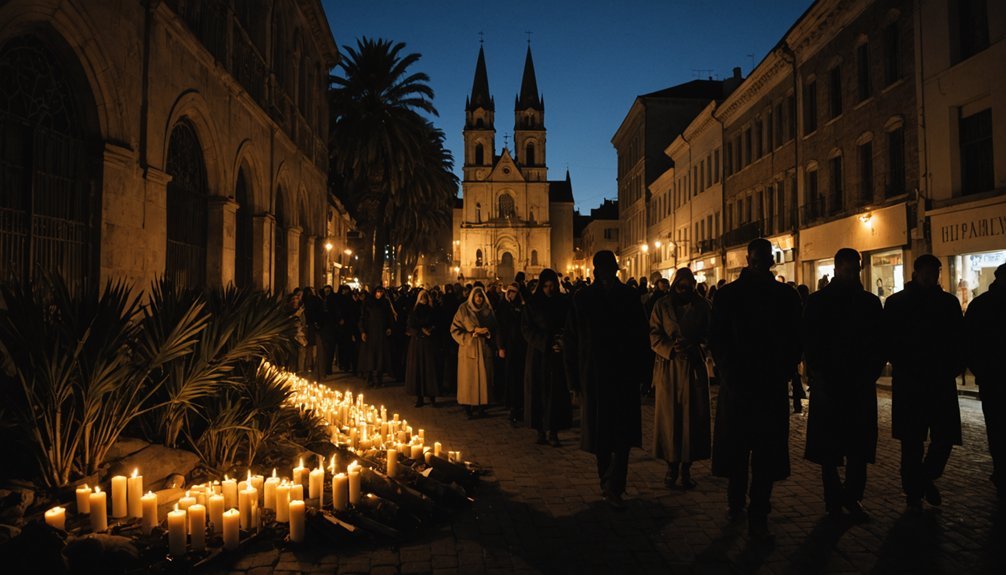You might remember where you were on April 15, 1984, when the news of the Palm Sunday Massacre broke. This dark day, when Christopher Thomas's jealousy turned deadly, left 11 people, including eight children, dead in East New York. As you reflect on this tragedy, consider the lives irreversibly altered and the broader implications it had on topics like gun control and justice reform. What lessons have we learned, and how well have we honored those lost? Let's explore.
Key Takeaways
- The Palm Sunday Massacre occurred on April 15, 1984, in East New York, Brooklyn, claiming 11 lives, including eight children.
- Perpetrator Christopher Thomas used a .22-caliber pistol and a .38-caliber revolver, driven by jealousy over a suspected affair.
- Thomas was convicted of first-degree manslaughter in 1985, sentenced to a capped 50 years, and released in January 2018 after serving nearly 34 years.
- The massacre prompted legislative proposals in New York to tighten parole laws for severe crimes like first-degree manslaughter.
- Memorials and advocacy continue to honor the victims, emphasizing the need for stricter gun control and reflective community and policy discussions.
The Prelude to Tragedy: Palm Sunday 1984
On April 15, 1984, a quiet Palm Sunday morning in East New York, Brooklyn, swiftly turned into one of the city's darkest hours. The tranquility of the holiday was shattered by a brutal event now known as the Palm Sunday Massacre. You wouldn't have expected such horror on a day typically filled with peace and prayer. But on this day, at 1080 Liberty Avenue, Christopher Thomas entered a home armed with a .22-caliber pistol and a .38-caliber revolver. His actions culminated in one of the most devastating mass shootings in New York's history. Motivated by a deep-seated jealousy, Thomas released a fury that obliterated the sanctity of Palm Sunday, leaving an indelible scar on the community.
Victims of the Massacre: Lives Lost
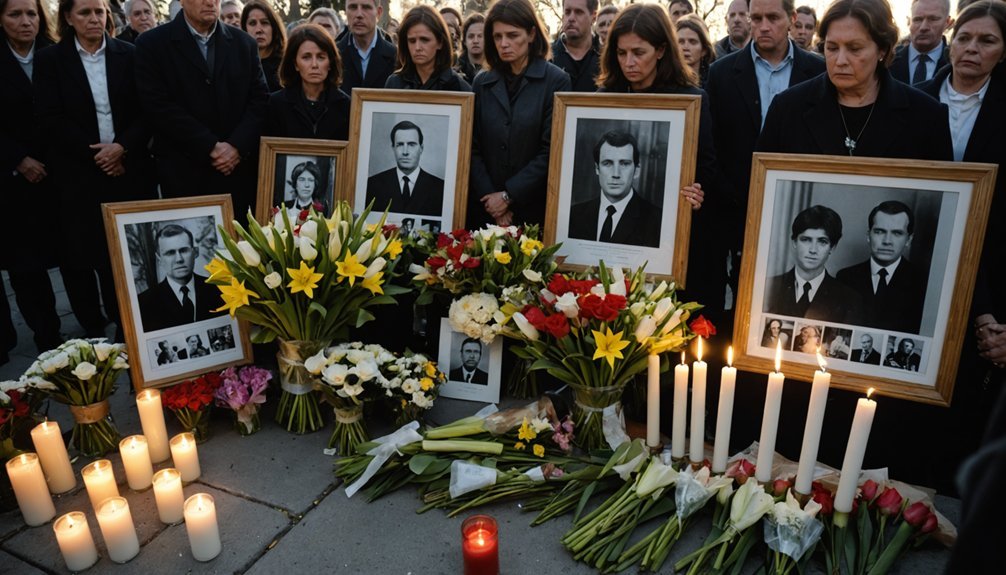
The Palm Sunday Massacre claimed the lives of 11 innocent people, extinguishing the futures of eight children and two women, one of whom carried an unborn child. Among the victims of the massacre were Betsy and Marelyn Bermudez, sisters who lived in their father's home. Virginia Lopez, also killed, left behind two young sons to mourn her loss. The tragedy didn't spare even the youngest; Alberto and Noel Maldonado, both three, were lost too soon. Amidst this immense loss, there was a glimmer of survival; Christina Rivera, the sole survivor as an infant, escaped the fate that befell her siblings. Raised by her grandmother, her life stands as a poignant reminder of the day's horror.
Christopher Thomas: The Perpetrator's Profile

Christopher Thomas, the man responsible for the Palm Sunday Massacre, was convicted on ten counts of first-degree manslaughter in 1985. Guilty of manslaughter, not murder, due to the jury finding him under extreme emotional distress and influenced by drugs, he escaped a harsher verdict. The root of his violent outbreak lay in a deep-seated jealousy, spurred by suspicions of an affair between his wife, Virginia Lopez, and Enrique Bermudez, the homeowner where the tragedy unfolded. Despite the severity of his crimes, Thomas's sentence was ultimately capped at 50 years. He served nearly 34 years before his release in January 2018, stirring debates on parole eligibility for those guilty of manslaughter in New York.
The Arrest and Investigation Process
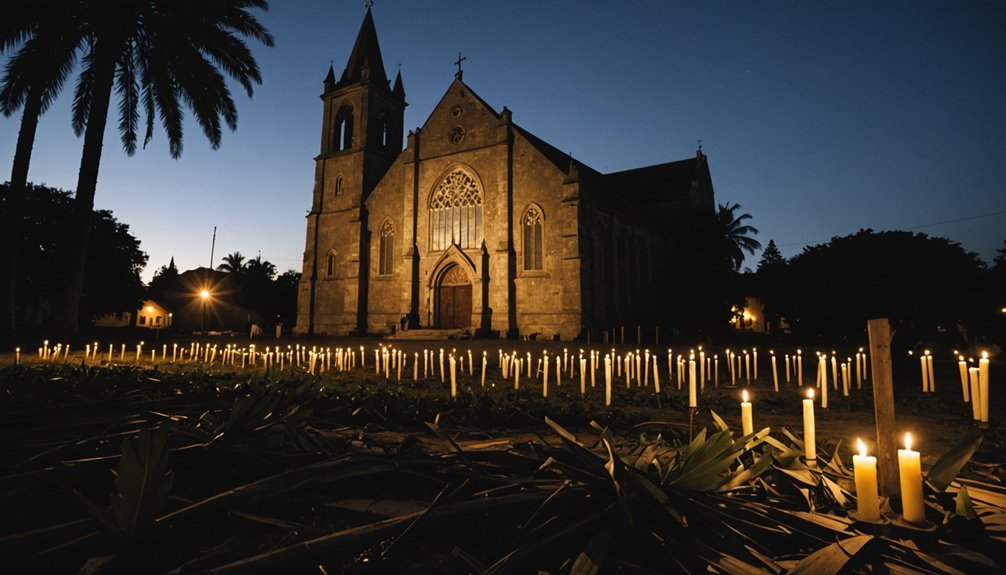
After the Palm Sunday Massacre shook East New York, an intensive investigation was swiftly launched, spearheaded by Lt. Herbert Hohmann. You're drawn into a world where the largest NYPD task force since the Son of Sam case comes together, determined to solve this heinous crime. Tips flood in, and soon, you're tracking down Christopher Thomas, a man whose life's details become essential to understanding the tragedy.
On June 19, 1984, your efforts lead to Thomas's arrest at his Bronx residence. Inside, you find shell casings that match those from the crime scene, tying him directly to the murders. It's a pivotal moment, marking a significant breakthrough in the investigation, culminating months of relentless police work.
Legal Proceedings: The Trial of Christopher Thomas

You might wonder how the trial of Christopher Thomas unfolded, starting on July 8, 1985. His defense argued that his mental state was compromised by cocaine addiction and depression, influencing his actions during the crime. Ultimately, after 16 hours of deliberation, the jury convicted him on manslaughter rather than murder, resulting in a lengthy sentence of up to 250 years, though capped at 50 years by state law.
Trial Beginnings: Key Dates
On July 8, 1985, the trial of Christopher Thomas commenced, marking the judicial response to the tragic Palm Sunday Massacre that claimed 11 lives. You would find yourself in a courtroom where the atmosphere was tense, the stakes incredibly high. Prosecutors presented their case with a clear motive in mind: jealousy. They argued that Thomas was driven by a jealous rage over a suspected affair between his wife and Enrique Bermudez, pushing him to commit the heinous acts. However, after intense deliberations that lasted over 16 hours, the jury convicted him not of murder, but of manslaughter. He was found guilty on ten counts of first-degree manslaughter, reflecting a complex interpretation of his actions and intent.
Defense Strategy: Mental State
While the trial of Christopher Thomas unfolded, his defense team presented an argument centered on his mental state at the time of the Palm Sunday Massacre. They argued that a mixture of extreme emotional disturbance and a crippling drug addiction clouded his judgment, pushing him toward actions that wouldn't align with his normal behavior. This strategy was essential, aiming to shift your perception of his culpability from premeditated murder to manslaughter. By underscoring these factors, the defense considerably influenced the jury's decision. After 16 hours of deliberation, you'd find him guilty of manslaughter, not murder. This not only altered the charges but also greatly reduced his potential sentence, highlighting the impact of the mental state defense in legal outcomes.
Verdict and Sentencing
After a lengthy trial beginning on July 8, 1985, the jury reached its verdict, acquitting Christopher Thomas of murder but convicting him on ten counts of first-degree manslaughter and weapons possession. You'd have watched as the courtroom absorbed the gravity of this decision. Thomas's emotional disturbance and cocaine addiction had swayed the jury's opinion, leading them away from a murder conviction. The sentence handed down was severe: 83 to 250 years, though the maximum he could serve was capped at 50 years by state law. This outcome stirred debates on the definitions of murder and manslaughter, especially in cases clouded by mental instability. Was justice served? That question lingered in the air, unresolved.
The Survivor's Tale: Christina Rivera's Life
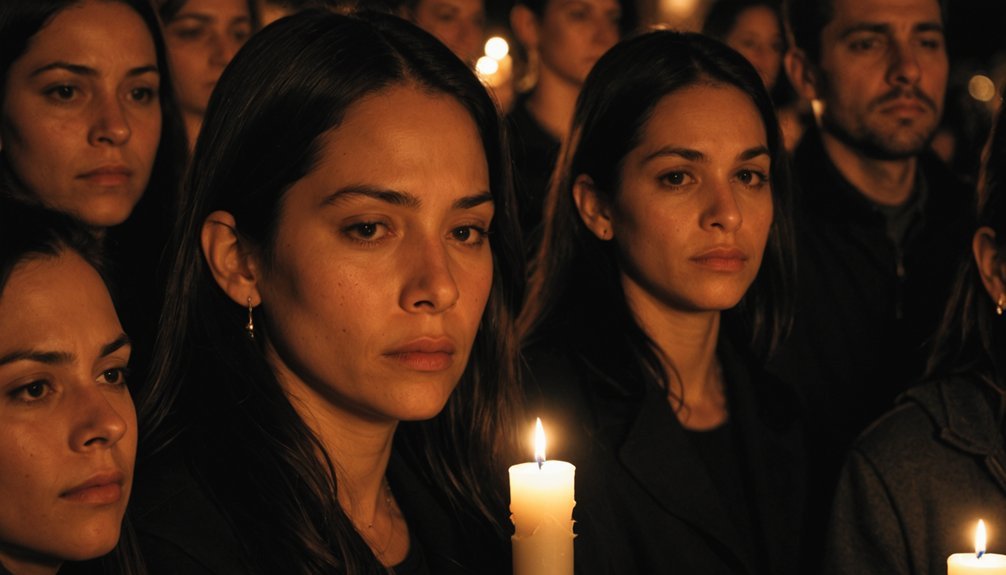
Imagine surviving a tragedy that took your family, leaving you the sole reminder of that fateful day. For Christina Rivera, the early challenges were vast, yet she found solace and stability in the loving arms of her adoptive family. The bonds she formed with Officer Joanne Jaffe, who went from guardian to mother, showcase an inspiring journey of healing and unconditional love.
Christina's Early Challenges
Despite surviving the harrowing Palm Sunday Massacre that took her mother, Carmen Perez, and many others, Christina Rivera faced immense challenges in her early years. Raised by her grandmother, Christina's life was a constant battle with the shadows of her past. Officer Joanne Jaffe, who initially cared for you after the tragedy, became a beacon of hope, guiding you through your darkest times.
Here's a snapshot of the significant figures in your early life:
| Relationship | Name | Role in Christina's Life |
|---|---|---|
| Mother | Carmen Perez | Victim of the massacre |
| Caretaker | Joanne Jaffe | Initial caregiver, later adoptive mother |
| Guardian | Grandmother | Primary caregiver post-tragedy |
Your resilience is a reflection of the strength you've drawn from these relationships, shaping your journey through adversity.
Adoptive Family Bonds
While Christina Rivera's early years were marked by the loss and trauma of the Palm Sunday Massacre, her adolescence brought newfound stability and love through her adoptive relationship with Officer Joanne Jaffe. When you imagine the emotional upheaval of such a childhood, it's heartening to see the strength of adoptive family bonds that can emerge from tragedy. Officer Jaffe, initially just a caretaker, evolved into a maternal figure, providing the security and affection Christina craved. After Christina's grandmother passed, Jaffe didn't hesitate; she officially adopted Christina, fortifying their bond legally and emotionally. This adoption wasn't merely a formality but a profound commitment to love and support, a reflection of how families can be beautifully reconstructed, even from the deepest sorrows.
Public and Legislative Reactions to the Release
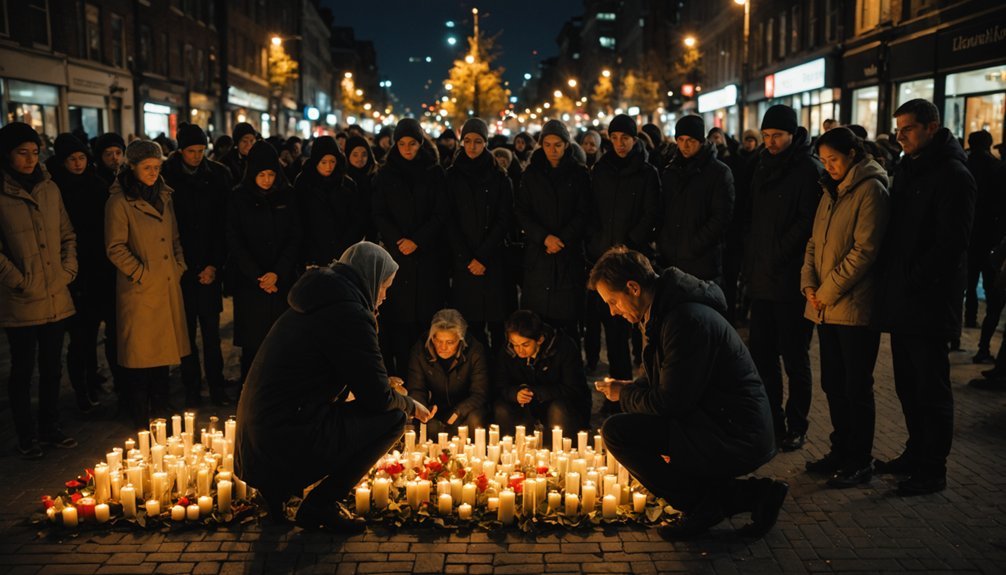
When Christopher Thomas was released from prison in January 2018 after serving nearly 34 years, the decision sparked a significant public outcry and led to urgent legislative action. You might remember how the media and public forums exploded with debates over public safety and the adequacy of his sentence. This wasn't just about a man getting out of prison; it was about ensuring a tragedy like the Palm Sunday Massacre never happens again.
In response, New York legislators, including State Senator Marty Golden and Assemblywoman Nicole Malliotakis, introduced new bills aimed at tightening parole laws for serious crimes. They were pushing for legislative reform that would block conditional releases for convicts of first-degree manslaughter, reflecting the community's insistence on tougher, more resilient justice systems.
How Does the Triumphal Entry Connect to the Events of the Palm Sunday Massacre?
The Triumphal Entry, when jesus enters jerusalem in triumph, symbolizes hope and liberation. However, juxtaposed with the grim events of the Palm Sunday Massacre, it highlights the tension between anticipation and tragedy. This contrast deepens our understanding of the profound sacrifices made during this pivotal moment in history.
Commemorating the Victims: Memorials and Legacy

Years have passed since the Palm Sunday Massacre, yet the memory of the victims remains vivid in the hearts of their community and families. Memorials, like the poignant service at the massacre site, bring together grieving hearts, reflecting on lives lost too soon, including Betsy and Marelyn Bermudez, Virginia Lopez, and the young Maldonado brothers. Christina Rivera, the massacre's sole survivor, embodies resilience, her survival story a stark reminder of the event's enduring impact. Officer Joanne Jaffe, who later became Christina's adoptive mother, champions this legacy, advocating for gun control and supporting affected families. These efforts guarantee the tragedy continues to influence U.S. policy discussions, driving the urgent need for legislative change to prevent future horrors.
Frequently Asked Questions
What Happened on Palm Sunday of Holy Week?
On Palm Sunday of Holy Week, you'd typically observe the Christian tradition commemorating Jesus Christ's triumphant entry into Jerusalem. This day involves church services where palm branches are blessed and carried in processions, symbolizing the palms spread before Christ as he entered the city. It marks the start of Holy Week, leading up to Easter Sunday, which celebrates Jesus' resurrection. It's a time of reflection and anticipation for the events of Easter.
What Is the Significance of the Palm Sunday Holiday?
Palm Sunday marks the start of Holy Week for you as a Christian, celebrating Jesus' triumphant entry into Jerusalem. You recognize this day for its profound symbolism—Jesus embraced as the Messiah, fulfilling prophecies of a humble king. This day initiates a week of reflection on themes of betrayal, sacrifice, and redemption, culminating in Easter, which celebrates resurrection and eternal life. It's a time for you to explore these deep spiritual themes.
Conclusion
As you reflect on the Palm Sunday Massacre, remember the lives tragically cut short and the community forever altered. Let this dark day in history fuel your commitment to advocating for stricter gun control and meaningful justice reform. Honor the victims by supporting initiatives that aim to prevent such senseless violence in the future. Your voice matters in shaping a safer, more compassionate world. Stand together, remember, and push for change.
